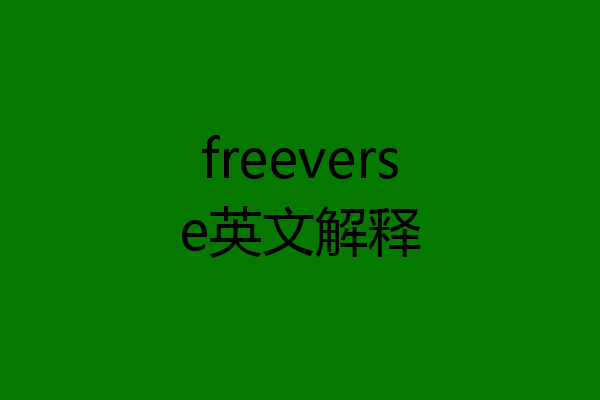
薄荷kokoro
1、Blank Verse:
Blank verse consists of unrhymed five-stress lines, properly, iambic pentameters.
Blank verse is the one closest to the rhythms of everyday English speech.
So dramatists like to use this form for their works. Shakespeare wrote most of his plays in blank verse.
2、Free Verse:
Free verse is a literary device that can be defined as poetry that is free from limitations of regular meter or rhythm.
And Free Verse does not rhyme with fixed forms.
Such poems are without rhythm and rhyme schemes.
And do not follow regular rhyme scheme rules, yet still provide artistic expression.
In this way, the poet can give his own shape to a poem however he or she desires.
However, it still allows poets to use alliteration, rhyme, cadences, and rhythms to get the effects.
So that they consider are suitable for the piece.
扩展资料:
Blank Verse无韵诗虽然不用韵脚,不压韵,但有韵律,还属于格律诗的范畴,仍是格律诗的一种,而且还是一种很重要的格律诗。它有抑扬格五韵律诗行,每行都有十个音节,读起来抑扬顿挫,和谐又有节奏。
无韵体(Blank verse)与十四行诗(Sonnet)一样盛于伊丽沙白时代。莎士比亚的戏剧大多都用的是无韵体创作的。
Free Verse自由诗是对格律诗的革命,它把韵脚和韵律一齐推翻,无拘无束地抒发诗人的感情,以免因拘于形式损伤了内容。
自由诗虽然不要韵脚,不讲韵律,但还是注意诗的节奏的,只不过不求助于老一套的传统格律,在形式上束缚自己,而是向另外的方面寻找。
写诗时,节奏随着诗请的发展,在诗的语言中自然流露而已。自由诗标榜自由,摆脱了格律诗格律的束缚,却没有打破分行写的习惯,仍旧沿用传统诗的旧形式。


紫枫2007
【Blank verse】 is poetry written in unrhymed iambic pentameter.[1] It has been described as "probably the most common and influential form that English poetry has taken since the sixteenth century"[2] and Paul Fussell has claimed that "about three-quarters of all English poetry is in blank verse."[3]The first documented use of blank verse in the English language was by Henry Howard, Earl of Surrey in his translation of the Æneid (c. 1554). He was possibly inspired by the Latin original, as classical Latin verse (as well as Greek verse) did not use rhyme; or he may have been inspired by the Italian verse form of Versi Sciolti , which also contained no rhyme. The play, Arden of Faversham (circa 1590 by an unknown author) is a notable example of end-stopped blank verse.【Free verse】 is a form of poetry that refrains from consistent meter patterns, rhyme, or any other musical pattern.Some poets have explained that free verse, despite its freedom, must still display some elements of form. Most free verse, for example, self-evidently continues to observe a convention of the poetic line in some sense, at least in written representations, thus retaining a potential degree of linkage, however nebulous, with more traditional forms. Donald Hall goes as far as to say that "the form of free verse is as binding and as liberating as the form of a rondeau."[1] and T. S. Eliot wrote, "No verse is free for the man who wants to do a good job."[2]Some poets have considered free verse restrictive in its own way. In 1922 Robert Bridges voiced his reservations in the essay 'Humdrum and Harum-Scarum.' Robert Frost later remarked that writing free verse was like "playing tennis without a net".

我想我是海啊
区别:含义不同。
blank verse 主要指不押韵的无韵诗和素体诗。
free verse 主要指不受格律约束的自由诗。
无韵诗:
英语格律诗的一种。每行用五个长短格音步――十个音节组成,每首行数不拘,不压韵。 音步类型都采取抑扬格五音步。不押韵的诗称无韵诗或白体诗。
多用在戏剧和叙事诗中。莎士比亚的戏剧和弥尔顿的paradise lost 都是用无韵诗写成的。 押韵的诗叫rhymed verse。无韵诗不同于自由诗。无韵诗虽不押韵,但是有固定节奏,以扬抑格五音步最常见。

上班好远
自由诗(free verse)是诗歌的一个类别,与格律诗相对,是指那些没有固定规格,不受音韵、字数、行数、节数限制的诗体。诗歌是通过诗人的艺术想像与丰富情感,以及鲜明的节奏与韵律,高度集中、概括形象地反映社会生活、表达诗人思想感情的文体,是最早出现的文学形式之一。自由诗便是在诗歌漫长的发展演变过程中,逐渐形成发展起来的一种崭新的诗歌表现形式。自由诗相对格律诗而言,在创作上有了较大的突破与自由。自由诗不要求节数、行数、字数的整齐,也不要求在词义与音韵上对仗,其起韵、换韵、押韵不要求有固定的规律。虽然自由诗也讲究节奏与韵律的优美与变化,但并不要求有规律地组合音节,也不要求有固定不变的规则,而是运用顺乎口语的自然旋律,使语音自然错落,形成间歇,以求得节奏与韵律的自然优美,因此,自由诗所表现的领域更加宽广,更适于表现复杂的社会生活与奔放的思想感情。自由诗的创始人是近代美国著名诗人惠特曼,是他为了表达对新时代的憧憬和热爱,歌颂大自然、歌颂大海、歌颂劳动、歌颂和平,而创造出来的一种全新的诗歌形式。自由诗在我国的产生,是“五四”新文化运动时期,在胡适、郭沫若等人的倡导下逐渐普及开来,一直发展至今,成为现代文学史上璀璨的明珠。